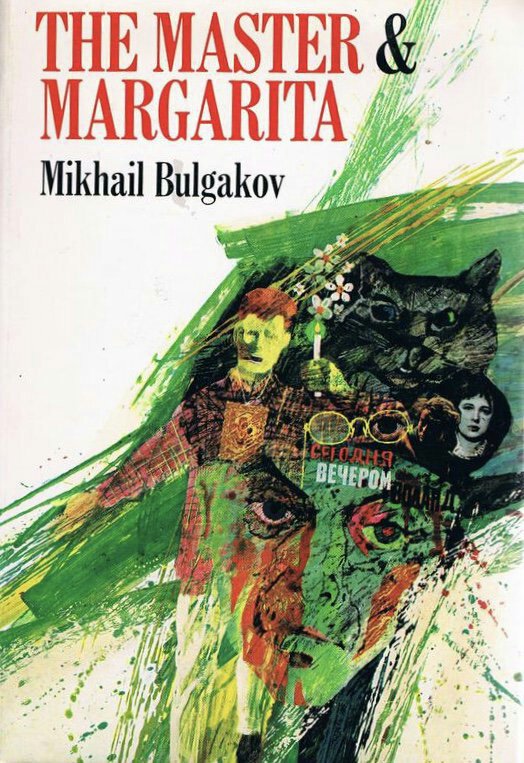
“рукописи не горят.” – “Manuscripts don’t burn.”
Mikhail Bulgakov’s extraordinary socio-political satire THE MASTER AND MARGARITA, in which Satan (in disguise) and his demonic cat wreak havoc among Moscow’s literary elite, was first published in book form in 1967. Bulgakov wrote the novel during the Stalinist repression of 1930s Russia and was still revising it when he died. Thanks to the persistence of his widow, Yelena, a censored version was finally published in two parts more than a quarter of a century later by the Russian journal Moskva. It was an instant success, and samizdat copies of the uncensored manuscript were circulated widely in the USSR. The full book was published in Russian by YMCA Press in Paris, and appeared soon afterwards in English translation. Mirra Ginsburg’s 1967 translation for Grove Press was based on the Moskva edition, whereas Michael Glenny, whose translation for Harvill Press/Harper and Row appeared the same year, had access to the more complete manuscript. The original novel has been re-edited and retranslated – into multiple languages – several times since then.
Mercè Rodoreda is regarded as the most influential 20th century Catalan writer. Her novel LA PLAÇA DEL DIAMANT, described by Colm Toíbín as ‘a small masterpiece’ and by Gabriel García Márquez as ‘the most beautiful novel published in Spain since the Civil War’ was first translated into English in 1967 by Eda O’Shiel under the title THE PIGEON GIRL. It has also appeared as THE TIME OF THE DOVES (tr. David Rosenthal) and, most recently, IN DIAMOND SQUARE (tr. Peter Bush).
Another novel first published in English in 1967 and known by different names is Boris Vian’s surrealist L’ÉCUME DES JOURS, translated from the French by Stanley Chapman in 1967 as FROTH ON THE DAYDREAM. A translation by John Sturrock appeared the following year under the title MOOD INDIGO, while Brian Harper translated it for the U.S. in 2012 as FOAM OF THE DAZE. Vian’s novel has inspired three feature films, two music albums and an opera.